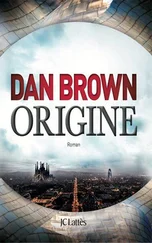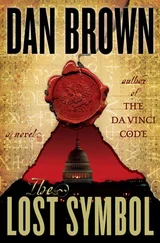Julián recalled the one time he had been here — another childhood outing with his father to learn about his country. The king had shown him around and quietly whispered, Look carefully, son. One day you’ll tear this down.
Now, as Julián followed the Guardia up the stairs toward the austere facade carved into the mountainside, he began to realize where they were going. A sculpted bronze door loomed before them — a portal into the face of the mountain itself — and Julián recalled stepping through that door as a boy, utterly transfixed by what lay beyond.
After all, the true miracle of this mountaintop was not the towering cross above it; the true miracle was the secret space inside it.
Hollowed out within the granite peak was a man-made cavern of unfathomable proportions. The hand-excavated cavern tunneled back nearly nine hundred feet into the mountain, where it opened up into a gaping chamber, meticulously and elegantly finished, with glimmering tile floors and a soaring frescoed cupola that spanned nearly a hundred and fifty feet from side to side. I’m inside a mountain , young Julián had thought. I must be dreaming!
Now, years later, Prince Julián had returned.
Here at the behest of my dying father.
As the group neared the iron portal, Julián gazed up at the austere bronze pietà above the door. Beside him, Bishop Valdespino crossed himself, although Julián sensed the gesture was more out of trepidation than faith.
 ConspiracyNet.com
ConspiracyNet.com
BREAKING NEWS
BUT... WHO IS THE REGENT?
Evidence has now surfaced proving that assassin Luis Ávila was taking his kill orders directly from an individual he called the Regent.
The identity of the Regent remains a mystery, although this person’s title may provide some clues. According to dictionary.com, a “regent” is someone appointed to oversee an organization while its leader is incapacitated or absent.
From our User Survey “Who Is the Regent?” — our top three answers currently are:
1. Bishop Antonio Valdespino taking over for the ailing Spanish king
2. A Palmarian pope who believes he is the legitimate pontiff
3. A Spanish military officer claiming to be acting on behalf of his country’s incapacitated commander in chief, the king
More news as we have it!
#WHOISTHEREGENT
Langdon and Ambra scanned the facade of the large chapel and found the entrance to the Barcelona Supercomputing Center at the southern tip of the church’s nave. Here, an ultramodern Plexiglas vestibule had been affixed to the outside of the rustic facade, giving the church the hybrid appearance of a building caught between centuries.
In an outer courtyard near the entrance stood a twelve-foot-tall bust of a primitive warrior’s head. Langdon couldn’t imagine what this artifact was doing on the grounds of a Catholic church, but he was fairly certain, knowing Edmond, that Kirsch’s workplace would be a land of contradictions.
Ambra hurried to the main entrance and pressed the call button at the door. As Langdon joined her, a security camera overhead rotated toward them, scanning back and forth for several long moments.
Then the door buzzed open.
Langdon and Ambra quickly pushed through the entrance into a large foyer that was fashioned from the church’s original narthex. It was an enclosed stone chamber, dimly lit and empty. Langdon had expected someone would appear to greet them — perhaps one of Edmond’s employees — but the lobby was deserted.
“Is there no one here?” Ambra whispered.
They became aware of the soft, pious strains of medieval church music — a polyphonic choral work for male voices that sounded vaguely familiar. Langdon couldn’t place it, but the eerie presence of religious music in a high-tech facility seemed to him a product of Edmond’s playful sense of humor.
Glowing in front of them on the wall of the lobby, a massive plasma screen provided the room’s sole light. The screen was projecting what could only be described as some kind of primitive computer game — clusters of black dots moving around on a white surface, like groups of bugs wandering aimlessly.
Not totally aimlessly , Langdon realized, now recognizing the patterns.
This famous computer-generated progression — known as Life — had been invented in the 1970s by a British mathematician, John Conway. The black dots — known as cells — moved, interacted, and reproduced based on a preordained series of “rules” entered by the programmer. Invariably, over time, guided only by these “initial rules of engagement,” the dots began organizing themselves into clusters, sequences, and recurring patterns — patterns that evolved, became more complex, and began to look startlingly similar to patterns seen in nature.
“Conway’s Game of Life,” Ambra said. “I saw a digital installation years ago based on it — a mixed-media piece titled Cellular Automaton. ”
Langdon was impressed, having heard of Life himself only because its inventor, Conway, had taught at Princeton.
The choral harmonies caught Langdon’s ear again. I feel like I’ve heard this piece. Perhaps a Renaissance Mass?
“Robert,” Ambra said, pointing. “Look.”
On the display screen, the bustling groups of dots had reversed direction and were accelerating, as if the program were now playing backward. The sequence rewound faster and faster, backward in time. The number of dots began diminishing... the cells no longer splitting and multiplying but recombining ... their structures becoming simpler and simpler until finally there were only a handful of them, which continued merging... first eight, then four, then two, then...
One.
A single cell blinked in the middle of the screen.
Langdon felt a chill. The origin of life.
The dot blinked out, leaving only a void — an empty white screen.
The Game of Life was gone, and faint text began to materialize, growing more pronounced until they could read it.
If we admit a First Cause,
the mind still craves to know
whence it came and how it arose.
“That’s Darwin,” Langdon whispered, recognizing the legendary botanist’s eloquent phrasing of the same question Edmond Kirsch had been asking.
“Where do we come from?” Ambra said excitedly, reading the text.
“Exactly.”
Ambra smiled at him. “Shall we go find out?”
She motioned beside the display screen to a columned opening that appeared to connect to the main church.
As they stepped across the lobby, the display refreshed again, now showing a collage of words that appeared randomly on the screen. The number of words grew steadily and chaotically, with new words evolving, morphing, and combining into an intricate array of phrases.
... growth... fresh buds... beautiful ramifications...
As the image expanded, Langdon and Ambra saw the words evolve into the shape of a growing tree.

What in the world?
They stared intently at the graphic, and the sound of the a cappella voices grew louder around them. Langdon realized that they were not singing in Latin as he had imagined, but in English.
“My God, the words on the screen,” Ambra said. “I think they match the music.”
“You’re right,” Langdon agreed, seeing fresh text appear on-screen as it was being sung simultaneously.
Читать дальше

 ConspiracyNet.com
ConspiracyNet.com









